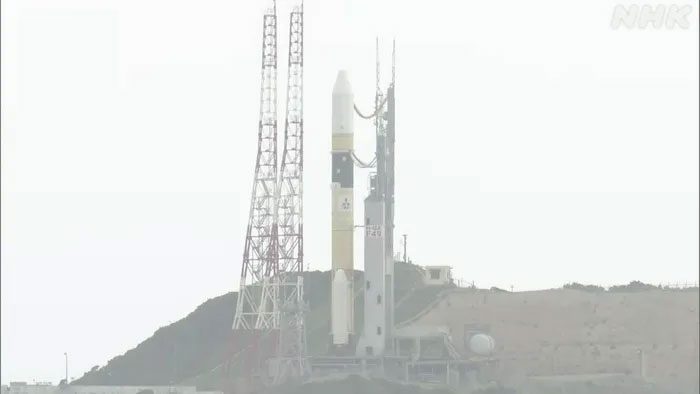On September 26, Japan’s Mitsubishi Heavy Industries announced that the H2A rocket, carrying a government information-gathering satellite, was officially launched into orbit from the Tanegashima Space Center in Kagoshima Prefecture at 14:24 local time. This marks the 49th launch of this rocket.

Japan officially launched the H2A rocket carrying a satellite into orbit at 14:24 on September 26 (Tokyo time). (Photo: NHK).
In a statement, Mitsubishi Heavy Industries, the agency responsible for the rocket launch, reported that there were no weather-related issues, and all final preparations for the launch, including fueling, were completed. Consequently, the H2A rocket, equipped with a satellite radar for monitoring and information gathering, was successfully launched into space at 14:24 this afternoon.
Mitsubishi also emphasized that the satellite radar launched this time can take images using radio waves even at night or in poor weather conditions, and will serve as a successor to previously operational satellites.
The Japanese government’s information-gathering satellites are essentially reconnaissance satellites capable of capturing images from any location on Earth. They are used for forecasting and assessing damage in the event of disasters, as well as for military data collection.
Previously, on September 9, Mitsubishi Heavy Industries had to postpone the 49th launch of the H2A rocket due to inclement weather. The H2A, a liquid-fueled rocket, has been launched into orbit by the Japan Aerospace Exploration Agency and Mitsubishi Heavy Industries since 2001, boasting a success rate of 97.8%. In its most recent launch on January 13, the H2A carried the Kogaku-8 satellite, owned by the Japanese government. Japan invested approximately 40 billion yen (equivalent to 275 million USD) to develop this satellite.
Currently, Japan plans to conclude the mission and retire the H2A rocket after the end of the 2024 fiscal year, with one more launch planned (after the 50th launch). The H2A and H2B rockets will be replaced by the next-generation H3 rocket.
Japan aims to develop the H3 rocket not only for satellite and probe launches but also to participate in missions delivering cargo to the International Space Station (ISS). The estimated cost to manufacture one H3 rocket is 5 billion yen (37 million USD), which is only half the cost of producing the H2A, yet it has a satellite launch capacity that is 1.3 times greater.


















































